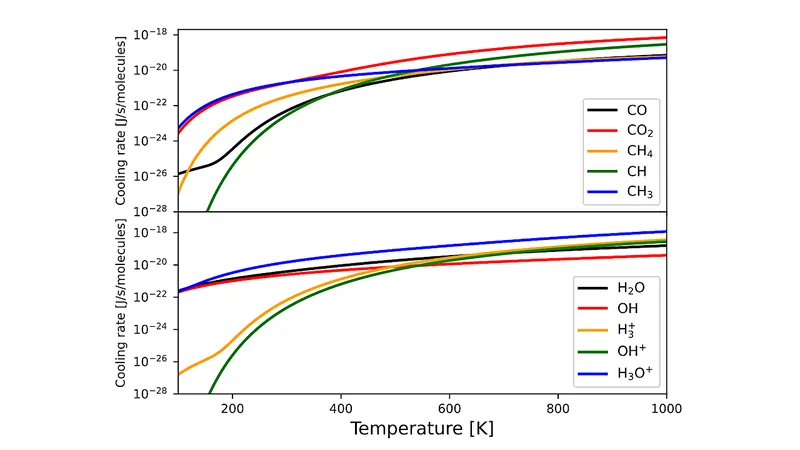
Unlocking the Secrets of Earth’s Early Atmosphere: How Carbon Compounds Stabilized Hydrodynamic Escape
2024-11-28
Author: Jia
Introduction
The study of Earth's early atmosphere reveals remarkable insights into the vital role carbon-based molecules played in regulating atmospheric conditions.
Radiative Cooling and Hydrodynamic Escape
Radiative cooling—where energy is efficiently dissipated by radiation—emerges as a key mechanism facilitating hydrodynamic escape of gases. This process is critical because thermal energy, absorbed from X-ray and extreme UV radiation, drives the outflow of atmospheric particles.
The Role of Carbon Compounds
Carbon oxides like carbon monoxide (CO) and carbon dioxide (CO2), along with their photochemical byproducts, have been identified as significant sources of radiative cooling. This is particularly notable not only in carbon-rich atmospheres but also in atmospheres dominated by hydrogen (H2), such as those theorized to exist on early Earth.
Recent Study Findings
Interestingly, the specific influence of these carbon compounds on the hydrodynamic escape process—especially in H2-rich environments—has not been thoroughly assessed until now. This recent study employs one-dimensional hydrodynamic escape simulations focused on Earth-sized planets with H2-rich atmospheres containing CO and CO2, along with their chemical derivatives.
Chemical Interactions
In examining the detailed interactions of these gases, researchers discovered that CO2 readily undergoes photolysis when exposed to sunlight, yielding CO and atomic oxygen. Meanwhile, CO proved to be more chemically stable, resisting breakdown. The interaction of atomic oxygen with hydrogen not only produces hydroxyl (OH) and water (H2O) but also influences the overall hydrodynamic escape mechanism.
Implications of Radiative Cooling
Crucially, the effects of radiative cooling—driven by CO, H2O, OH, and even the ion H3+—significantly mitigate hydrodynamic escape rates. Even in scenarios where carbon oxides represent a mere fraction (below 0.01) of the atmospheric composition, their cooling effects can prolong the lifespan of H2-rich atmospheres by a staggering tenfold compared to pure hydrogen atmospheres.
Conclusion
Moreover, this phenomenon contributes to the retention of heavier carbon and nitrogen-bearing molecules as well as noble gases, providing a stable environment that could be conducive to the emergence of life. This groundbreaking research not only enhances our understanding of early Earth’s atmosphere but also raises intriguing questions about the conditions necessary for life to flourish on other planets.
Scientists are eager to dive deeper into the implications of these findings, speculating that similar processes may play a pivotal role in the atmospheres of exoplanets throughout the cosmos.



 Brasil (PT)
Brasil (PT)
 Canada (EN)
Canada (EN)
 Chile (ES)
Chile (ES)
 España (ES)
España (ES)
 France (FR)
France (FR)
 Hong Kong (EN)
Hong Kong (EN)
 Italia (IT)
Italia (IT)
 日本 (JA)
日本 (JA)
 Magyarország (HU)
Magyarország (HU)
 Norge (NO)
Norge (NO)
 Polska (PL)
Polska (PL)
 Schweiz (DE)
Schweiz (DE)
 Singapore (EN)
Singapore (EN)
 Sverige (SV)
Sverige (SV)
 Suomi (FI)
Suomi (FI)
 Türkiye (TR)
Türkiye (TR)